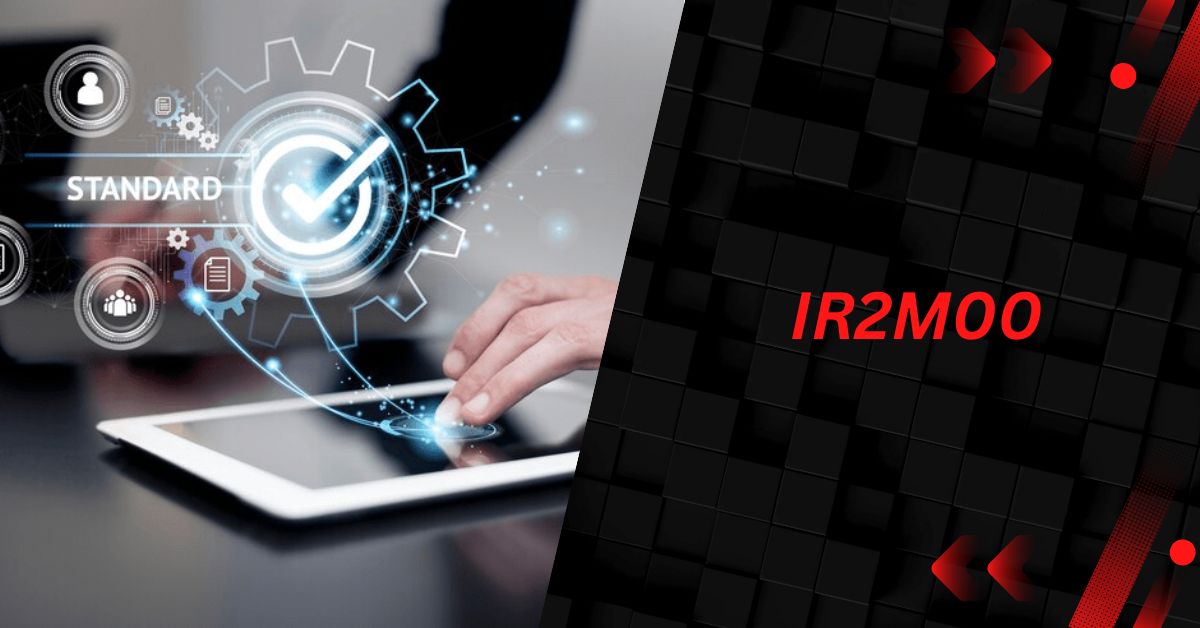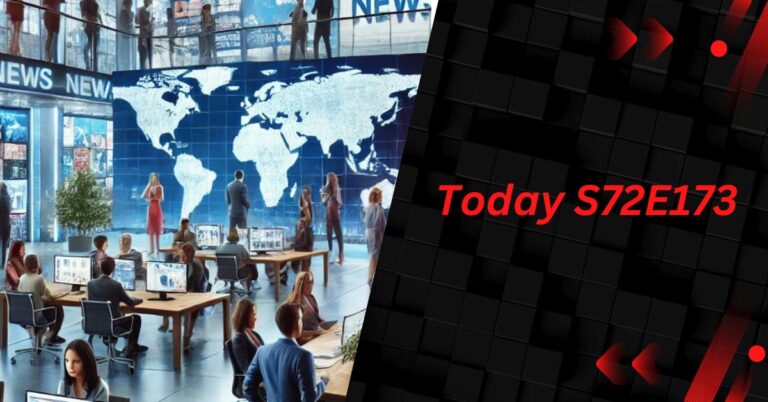IR2M00 – Infrared Imaging and Remote Sensing Technology
Infrared technology has revolutionized many industries by offering innovative ways to see beyond the visible spectrum. One of the most notable advancements in this field is the IR2M00, a cutting-edge technology used primarily in infrared imaging, remote sensing, healthcare, and industrial applications. This article provides a deep dive into the IR2M00, exploring its applications, benefits, and the technology behind it.
What is IR2M00?
The IR2M00 is a specialized technology that enables detailed thermal imaging and data collection. It is widely used across various fields, including:
- Infrared Imaging: Detecting heat signatures and visualizing them.
- Remote Sensing: Gathering information about objects or areas from a distance, often using satellites or drones.
- Healthcare: Non-invasive imaging to diagnose and monitor medical conditions.
- Industrial Applications: Monitoring equipment, detecting faults, and improving safety in various industrial settings.
How IR2M00 Works
At its core, the IR2M00 works by detecting infrared radiation, which is emitted by all objects as a form of heat. This radiation is then converted into an electronic signal, which can be displayed as an image or analyzed for data. The technology relies on specialized sensors that are sensitive to infrared wavelengths, allowing it to capture detailed images and provide valuable insights.
Applications of IR2M00
1. Infrared Imaging
Infrared imaging is one of the most prominent applications of IR2M00 technology. It is used to detect heat patterns and visualize them in the form of images. This application is particularly useful in:
- Night Vision: Enhancing visibility in low-light conditions.
- Surveillance: Monitoring areas for security purposes.
- Wildlife Observation: Tracking animals without disturbing them.
- Firefighting: Identifying hotspots in burning buildings.
2. Remote Sensing
Remote sensing involves collecting data about an object or area from a distance. The IR2M00 plays a crucial role in this field by providing high-resolution thermal images. Applications include:
- Environmental Monitoring: Tracking changes in vegetation, water bodies, and urban areas.
- Agriculture: Assessing crop health and optimizing irrigation.
- Disaster Management: Detecting and analyzing natural disasters like wildfires and floods.
3. Healthcare
In healthcare, IR2M00 technology is used for non-invasive imaging, offering a safe and effective way to diagnose and monitor medical conditions. Some key applications include:
- Fever Detection: Identifying elevated body temperatures.
- Cancer Detection: Early diagnosis of breast cancer through thermal imaging.
- Circulatory System Monitoring: Assessing blood flow and detecting blockages.
4. Industrial Applications
The industrial sector benefits greatly from IR2M00 technology by using it for various purposes:
- Predictive Maintenance: Monitoring machinery to prevent breakdowns.
- Quality Control: Inspecting products for defects.
- Energy Audits: Identifying energy loss in buildings and equipment.
Advantages of IR2M00 Technology
High Precision and Accuracy
One of the primary advantages of IR2M00 is its high precision and accuracy. The technology can detect even the smallest changes in temperature, making it ideal for applications that require detailed analysis.
Non-Invasive
In healthcare and industrial settings, the non-invasive nature of IR2M00 technology is a significant benefit. It allows for monitoring and diagnostics without the need for direct contact, reducing the risk of contamination and damage.
Versatility
The IR2M00 is highly versatile and can be used in various fields, from healthcare to environmental monitoring. Its ability to provide detailed thermal imaging makes it a valuable tool in numerous applications.
Cost-Effective
While the initial investment in IR2M00 technology may be high, its long-term benefits make it cost-effective. The technology can help prevent costly repairs, improve efficiency, and enhance safety, leading to significant savings over time.
The Technology Behind IR2M00
Infrared Sensors
The heart of IR2M00 technology lies in its infrared sensors. These sensors are designed to detect infrared radiation emitted by objects. The sensors are highly sensitive and can capture even the faintest heat signatures, making them ideal for detailed imaging.
Data Processing
Once the infrared radiation is detected, the data is processed to create images or analyze the information. Advanced algorithms are used to enhance the quality of the images and extract valuable insights from the data.
Display and Analysis
The final step in the IR2M00 process involves displaying the images or data in a format that can be easily understood. This may include thermal images, graphs, or reports, depending on the application.
Future of IR2M00 Technology
The future of IR2M00 technology looks promising, with continued advancements expected to enhance its capabilities. Some potential developments include:
Improved Sensor Technology
As sensor technology continues to evolve, we can expect even higher precision and accuracy from IR2M00 devices. This will enable more detailed imaging and better data analysis.
Integration with AI and Machine Learning
The integration of IR2M00 technology with artificial intelligence (AI) and machine learning could revolutionize how data is analyzed. AI algorithms can process large amounts of data quickly, providing insights that would be impossible to obtain manually.
Expansion into New Industries
While IR2M00 is already used in various fields, its potential applications are far-reaching. As the technology becomes more accessible, we can expect to see it used in new industries, such as automotive, construction, and consumer electronics.
Real-World Case Studies
Case Study 1: Environmental Monitoring with IR2M00
In this case study, IR2M00 technology was used to monitor deforestation in a remote area. The technology provided detailed thermal images, allowing researchers to track changes in vegetation over time. The data collected helped inform conservation efforts and guide reforestation projects.
Case Study 2: Healthcare Application of IR2M00
A hospital implemented IR2M00 technology to monitor patients’ body temperatures in real time. This non-invasive method allowed for continuous monitoring without disturbing patients. The technology proved particularly useful during the COVID-19 pandemic, helping to identify and isolate individuals with elevated temperatures.
Case Study 3: Industrial Predictive Maintenance
A manufacturing plant used IR2M00 technology to monitor its machinery. The technology detected small temperature changes in equipment, allowing maintenance teams to address issues before they led to costly breakdowns. As a result, the plant experienced a significant reduction in downtime and maintenance costs.
Challenges and Limitations of IR2M00 Technology
Cost of Implementation
While IR2M00 technology offers numerous benefits, the cost of implementation can be a barrier for some organizations. The initial investment in equipment and training can be high, particularly for smaller businesses.
Complexity of Data Interpretation
Interpreting the data collected by IR2M00 devices can be complex, requiring specialized knowledge and training. This can make it challenging for organizations to fully leverage the technology without investing in skilled personnel.
Environmental Factors
Environmental factors, such as weather conditions and interference from other heat sources, can affect the accuracy of IR2M00 technology. In some cases, these factors may limit the effectiveness of the technology.
Best Practices for Using IR2M00 Technology
Proper Calibration
To ensure accurate results, it’s essential to properly calibrate IR2M00 devices. Regular calibration checks should be performed to maintain the precision of the sensors.
Training and Education
Investing in training and education for personnel is crucial to maximize the benefits of IR2M00 technology. Understanding how to interpret data and use the equipment effectively can make a significant difference in the outcomes.
Maintenance and Upkeep
Regular maintenance of IR2M00 devices is necessary to ensure their longevity and accuracy. This includes routine inspections, software updates, and addressing any issues that may arise.
FAQs about IR2M00
1. What is the IR2M00 used for?
The IR2M00 is used for infrared imaging, remote sensing, healthcare diagnostics, and industrial applications. It enables detailed thermal imaging and data collection.
2. How does IR2M00 technology work?
IR2M00 technology works by detecting infrared radiation emitted by objects, converting it into an electronic signal, and processing it to create thermal images or analyze data.
3. What industries benefit from IR2M00 technology?
Industries such as healthcare, environmental monitoring, agriculture, and manufacturing benefit from IR2M00 technology.
4. Is IR2M00 technology cost-effective?
While the initial investment may be high, IR2M00 technology is cost-effective in the long run due to its ability to prevent costly repairs, improve efficiency, and enhance safety.
5. What are the limitations of IR2M00 technology?
Some limitations include the cost of implementation, the complexity of data interpretation, and environmental factors that can affect accuracy.
6. How can I ensure accurate results with IR2M00?
To ensure accurate results, it’s important to properly calibrate the devices, invest in training for personnel, and perform regular maintenance.
Conclusion
The IR2M00 represents a significant advancement in infrared imaging and remote sensing technology. Its applications in healthcare, industrial settings, and environmental monitoring make it a valuable tool across various industries. While there are challenges associated with its implementation, the benefits far outweigh the drawbacks.






